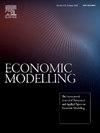Two kinds of centralization: Divergences between China and Europe
IF 4.7
2区 经济学
Q1 ECONOMICS
引用次数: 0
Abstract
This paper develops a dynamic model of culture–politics–technology coevolution to explain the historical divergences between China and Europe. In China, rice cultivation and the monsoon climate generated high returns to large-scale infrastructure, encouraging collectivism and sustaining a steady trajectory of growing state centralization, which we call “cultural centralization”. In contrast, Europe’s wheat-based agriculture and oceanic or Mediterranean climate produced lower returns to infrastructure, preserving individualism and political fragmentation. Yet individualism also stimulated innovation and productivity growth, creating a non-monotonic path of centralization: an initial phase of decentralization followed by renewed centralization driven by technological advances, a process of “technological centralization”. Overall, our analysis shows how environmental conditions, cultural norms, and infrastructure productivity together shaped the contrasting long-run paths of political centralization and technological progress in China and Europe.
两种集权:中国与欧洲的分歧
本文建立了一个文化-政治-技术共同进化的动态模型来解释中欧之间的历史分歧。在中国,水稻种植和季风气候为大规模基础设施带来了高回报,鼓励了集体主义,并维持了不断增长的国家集权的稳定轨迹,我们称之为“文化集权”。相比之下,欧洲以小麦为基础的农业和海洋性或地中海气候对基础设施的回报较低,保留了个人主义和政治分裂。然而,个人主义也刺激了创新和生产力的增长,创造了一条非单调的集中化道路:分散的初始阶段,随后是由技术进步驱动的新的集中化,这是一个“技术集中化”的过程。总体而言,我们的分析显示了环境条件、文化规范和基础设施生产率如何共同塑造了中国和欧洲政治集中化和技术进步的不同长期路径。
本文章由计算机程序翻译,如有差异,请以英文原文为准。
求助全文
约1分钟内获得全文
求助全文
来源期刊

Economic Modelling
ECONOMICS-
CiteScore
8.00
自引率
10.60%
发文量
295
期刊介绍:
Economic Modelling fills a major gap in the economics literature, providing a single source of both theoretical and applied papers on economic modelling. The journal prime objective is to provide an international review of the state-of-the-art in economic modelling. Economic Modelling publishes the complete versions of many large-scale models of industrially advanced economies which have been developed for policy analysis. Examples are the Bank of England Model and the US Federal Reserve Board Model which had hitherto been unpublished. As individual models are revised and updated, the journal publishes subsequent papers dealing with these revisions, so keeping its readers as up to date as possible.
 求助内容:
求助内容: 应助结果提醒方式:
应助结果提醒方式:


